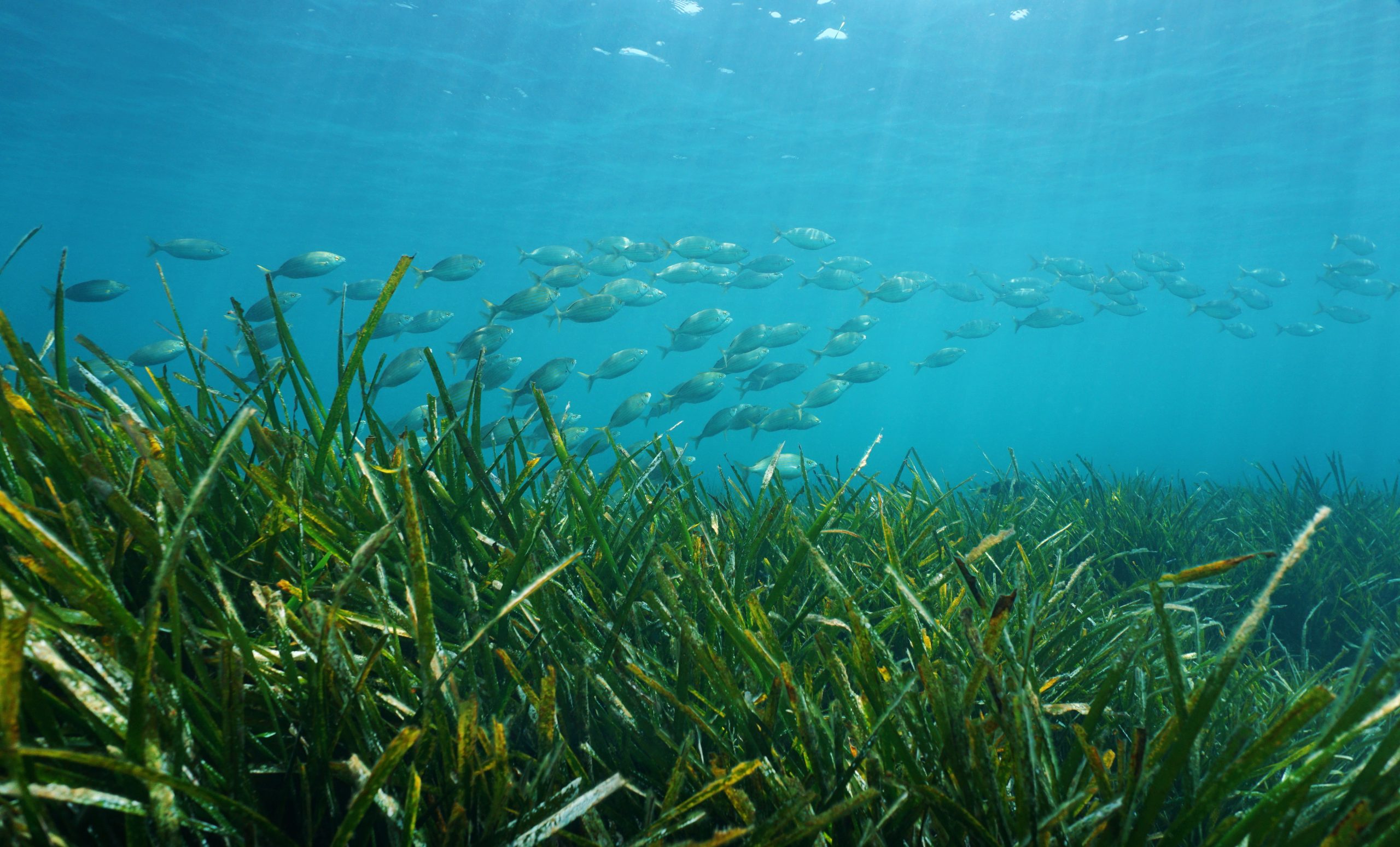News
New research shows which Mediterranean coastal communities must plan now for seagrass loss

News | May 2022
A new study from environmental mapping experts at the UN Environment Programme World Conservation Monitoring Centre (UNEP-WCMC) has revealed which parts of the Mediterranean face the greatest socio-economic threats from seagrass loss due to rising sea temperatures.
The Mediterranean Sea is home to 1.2 million hectares of seagrass meadows. As well as being home to diverse marine life, seagrass ecosystems provide numerous services and benefits to people – from the habitats that form vital fishing regions and support livelihoods, to bolstering coastal defences. In UNEP-WCMC's report ‘Out of the Blue’, estimates suggest that “seagrass meadows... provide valuable nursery habitat to over one fifth of the world’s largest 25 fisheries” and “reduce wave energy hitting the coast by about 40 percent, lessening damage to coasts”.
However, seagrass meadows are under threat from coastal development, agricultural pollution and overfishing, but also from marine heatwaves, which are intensifying due to climate change. These heatwaves are predicated to become increasingly severe and stand to destroy three-quarters of the most common seagrass species in the Mediterranean, unless communities can mitigate their impact.
Environmental monitoring experts at UNEP-WCMC set out to discover which Mediterranean communities are most at risk due to heatwave-induced seagrass loss over the next 30 years, to help policy makers and communities plan ahead.
In their new study, recently published in Estuarine, Coastal and Shelf Science, the research team worked to identify priority seagrass areas which provide high levels of coastal protection and fishing resources.
They combined these findings on key areas with sea temperature change predictions, and the Intergovernmental Panel on Climate Change’s future scenario model 4.5 – based around reduced greenhouse gas emissions from 2040 onwards – to pinpoint which important seagrass areas are most at risk under even conservative climate change estimates.
The team found that by 2050, almost all areas of the Mediterranean will hit maximum daily sea surface temperatures above 29C and experience month-long marine heatwaves – prolonged enough to cause long-term damage to seagrass.
The vast majority of coastal areas hosting seagrass will be at high risk, with only small pockets in the south of France and Turkish coast possibly escaping major susceptibility to heat waves.
The impact of seagrass loss on coastal defences – mitigating against coastal erosion and the impacts of high waves – is likely to be felt most severely in the central Mediterranean in the coastal regions of Italy and Tunisia, as well as in Cyprus. Meanwhile, the loss of seagrass-dependent fisheries is likely to be most severely felt in the coastal regions of Tunisia and Libya, with fisheries in Greece, Italy, Turkey, and Spain also seriously at risk due to seagrass loss.
The study’s authors are now urging policy makers to adopt and apply the team’s ready-to-use Mapping Environmentally Sensitive Assets methodology to conduct more extensive scoping work to prioritise action and adaptation.
The researchers suggest heavily populated areas at high risk of reduced coastal protection from seagrass loss may need to shift to nature-based solutions, such as wetland restoration, as well as investing in climate resilient green infrastructure.
They recommend more investigation takes place into whether other mitigations – such as improved water quality via reduced industrial pollution – could boost seagrass resilience to rising temperatures. They add that: “where this is not feasible, larger-scale policy changes may be needed to support coastal communities to diversify economic opportunities to other fishery and non-fishery activities”.
Our study shows marine heatwaves will have a significant impact on Mediterranean seagrass meadows under the IPCC’s intermediate scenario for global warming – meanwhile current modelling suggests that we are well on track for worse outcomes. Regional policy makers must look ahead now to safeguard communities at direct economic and physical risk from the likely destruction of seagrass meadows.
Lead author and UNEP-WCMC Data Scientist Sara Pruckner
The sensitivity mapping methodology we demonstrate provides a quick and effective predictive tool which we hope to see regional policy makers take urgent advantage of to safeguard coastal communities and marine life.
Have a query?
Contact us
communications@unep-wcmc.org
